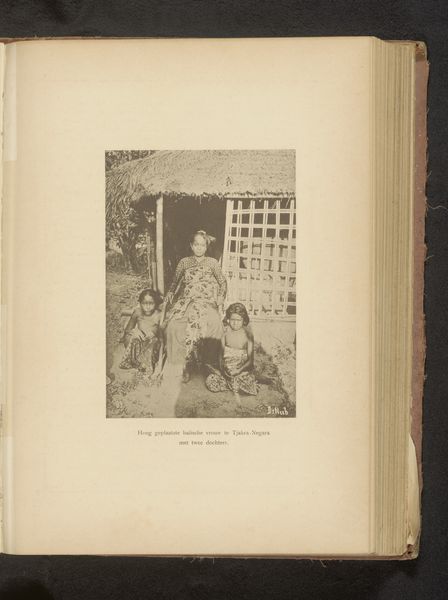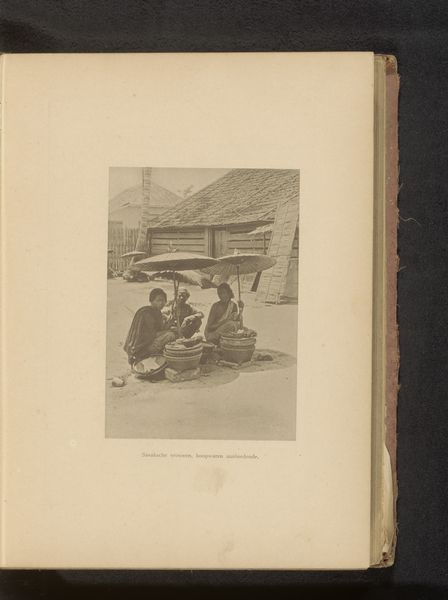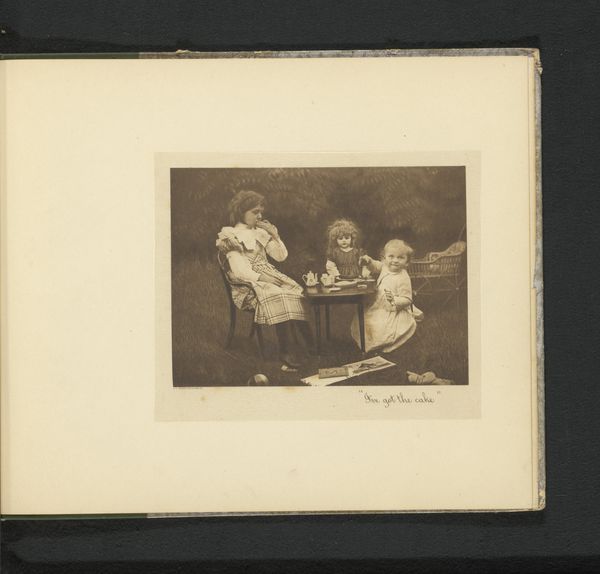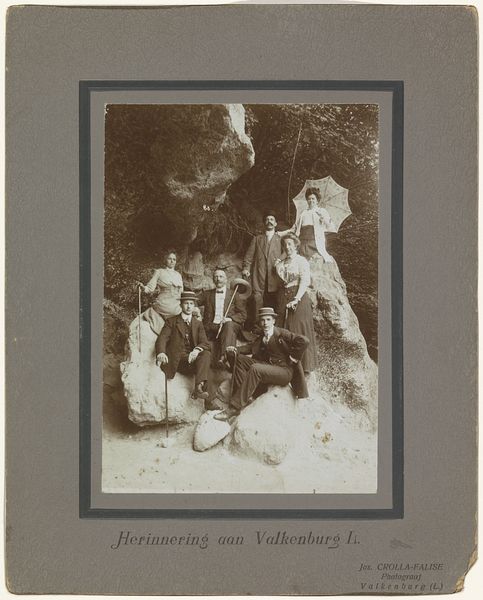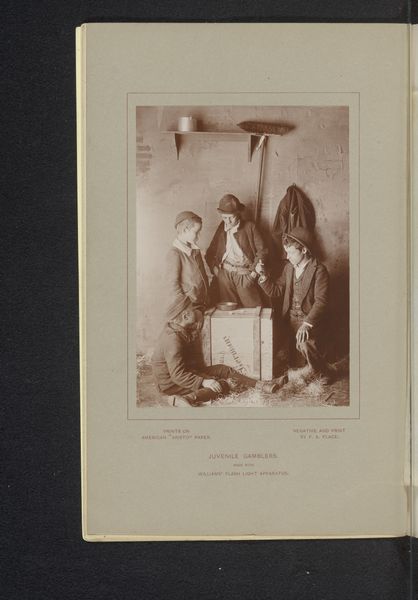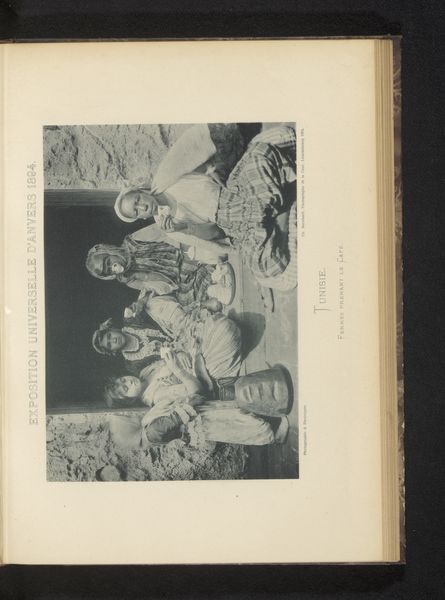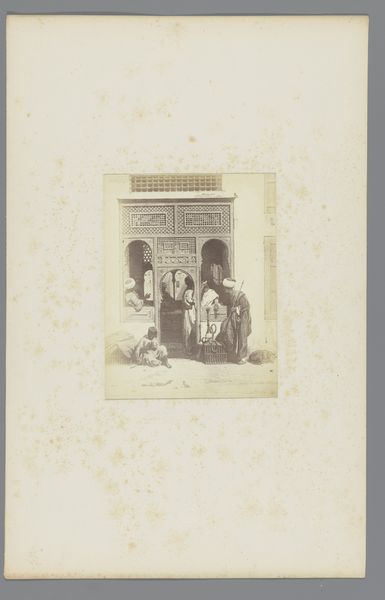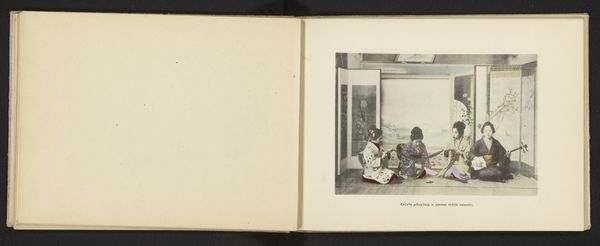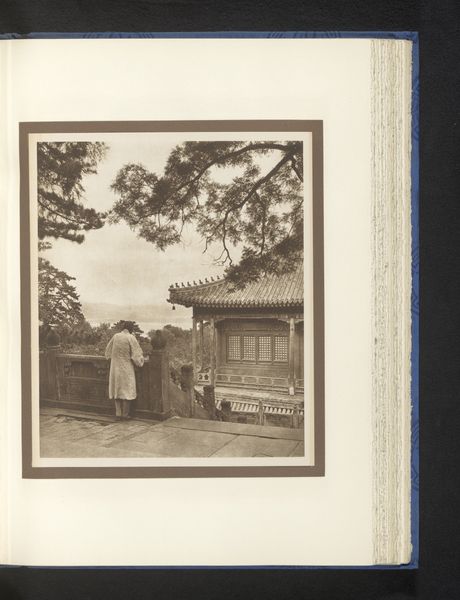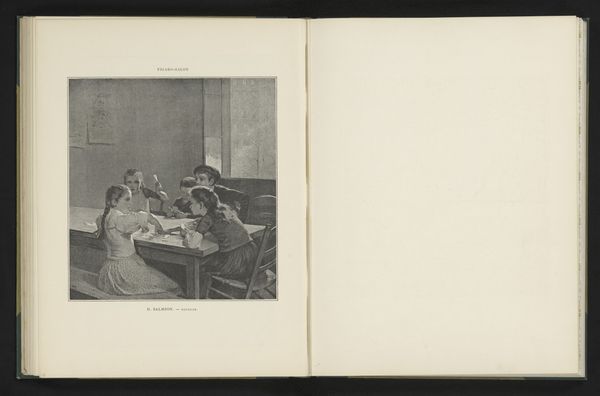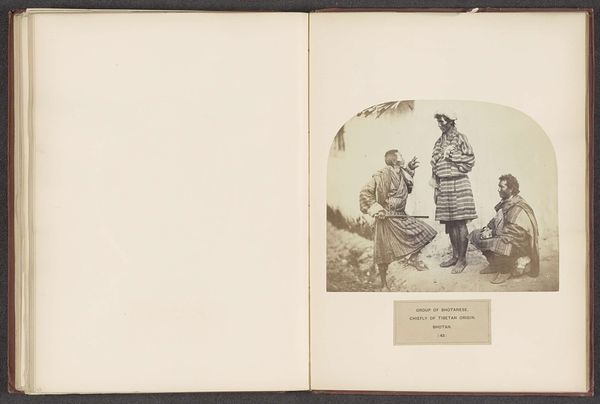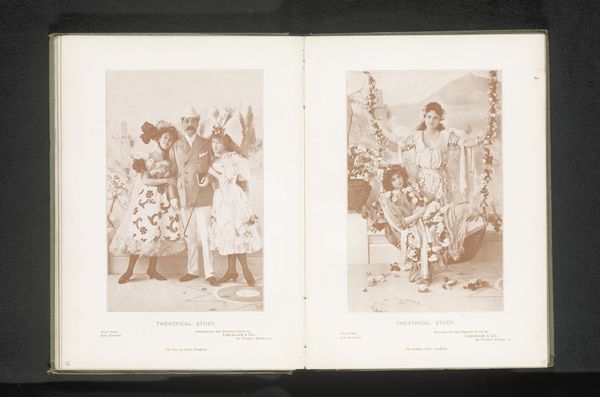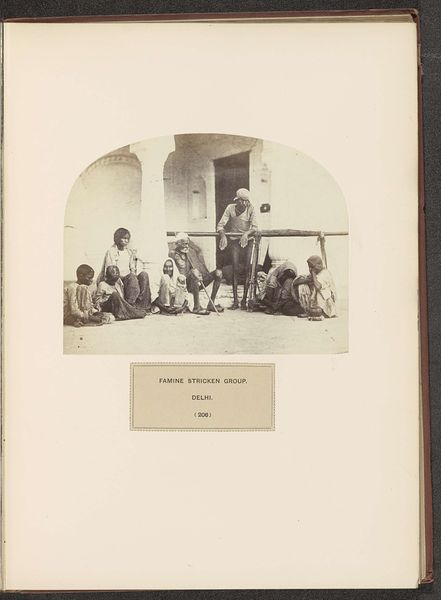
Twee kinderen spelen voor een vrouw achter een weefgetouw in het Tunesische deel van de Wereldtentoonstelling van Antwerpen in 1894 1894
0:00
0:00
Dimensions: height 215 mm, width 153 mm
Copyright: Rijks Museum: Open Domain
Curator: This photograph, taken by Charles Bernhoeft in 1894, is titled "Two Children Playing in Front of a Woman at a Loom in the Tunisian Section of the Antwerp World Exhibition." Editor: The moment I see this albumen print, I'm struck by a profound sense of stillness amidst everyday life. There’s something serene and composed about this tableau. Curator: Yes, it presents a snapshot of life, or rather, a constructed performance of life for the world stage. World exhibitions showcased idealized and often exoticized versions of other cultures. It's important to view such images through that lens. Notice the presence of what was known at the time as "orientalism." The scene is staged to convey ideas of North African life as exotic and timeless. Editor: True, it’s impossible to separate this image from the power dynamics of the time. Still, looking beyond that, what intrigues me is the connection between labor and childhood. The woman is actively weaving, a direct contributor to her family and society, and the children are engaged in play right at her feet, which emphasizes their innocence, protected status, and proximity to labor as life experience. What do you read into their play? It looks almost like they are making some kind of craftwork or tinkering. Curator: Precisely! These children probably spent most of their time witnessing, participating in, and internalizing weaving traditions from a young age. Their toys perhaps mimic or reflect aspects of their future work. Childhood, of course, has not always been thought of as we perceive it today. They also are representing Tunisia for an international audience, the exhibition sought to offer a simplified, almost theatrical interpretation of the region for consumption, where family, craft and tradition held iconic status. Editor: Right, the romantic vision. So much is conveyed here, subtly packaged. Still, I look at this image and it leaves me ruminating on the transmission of craft and the cultural legacies passed down through generations. Despite the staged setting, I feel a kind of deep continuity emanating from it. Curator: That sense of continuity resonates. What might feel timeless to our eye, might actually indicate both the perpetuation of culture and the effect of staging for consumption in a spectacle. These were all ways in which Western societies viewed and related to foreign lands and people, ways in which cultural memory becomes commodified in exhibition settings. Editor: Definitely something to be sensitive to when encountering something that, initially, appears idyllic and timeless. Thanks for opening up these layered nuances.
Comments
No comments
Be the first to comment and join the conversation on the ultimate creative platform.
